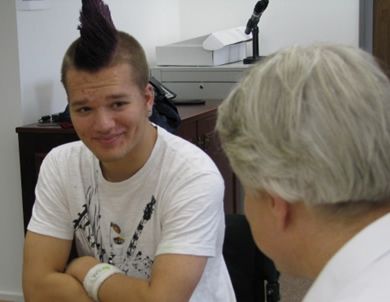Prevention Strategies



Since some high-profile cases, agencies that deal with young people have an increased responsibility to work with each other to prevent substance misuse. This session outlines some of those responsibilities and suggests ways to identify young people at risk of substance misuse and put in place prevention strategies.
Learning Objectives
By the end of this session you will be able to:
- List the predictive factors for substance misuse in young people and the factors that protect them
- Define the links with mental health and well-being
Every Child Matters (2003) established the vision that every child should be able to reach their potential.
The misuse of drugs is known to have adverse effects for young people on both a short-term and long-term basis.
The aim of this session is to help you to be able to predict which young people are likely to misuse drugs and manage their treatment.
- Identify the primary and community partners to engage and seek advice from
Wendi is a registered sick children’s nurse with a BA (Hons) in health and community studies and a BSc (Hons) in specialist nursing practice (community children’s nursing). She is currently working with the Department of Health on primary care for children and young people.
In the Cheshire and Merseyside Child Health Development Programme, Wendi is Strategic Development Lead and Business Manager and deputises for the Chief Executive. She is also Child Health Mapping Lead for the North West and links with the Comprehensive School Improvement Plan (CSIP) on specific pieces of work across commissioning and self assessment.
Her role includes acting as project lead within the Child Health Development Programme for the National Children’s Bureau and she is Chair of the GP network for Cheshire and Merseyside.

- Acute Medicine | Cardiorespiratory arrest 02 knowl...
- Posted By eIntegrity Healthcare e-Learning
- Posted Date: 2024-12-27
- Location:Online
- This session looks at the diagnosis and management of an accidental hypothermic patient presenting either with or without cardio respiratory arrest, and common complications. The initial rescue and recovery is not covered in this session.
- Introduction to Female Genital Mutilation/Cutting/...
- Posted By True Relationships & Reproductive Health
- Posted Date: 2024-12-27
- Location:Online
- This course gives an introduction to Female Genital Mutilation/ Cutting/ Circumcision (FGM/C) in Aus...
- Acute Medicine | Chest pain 01 knowledge A
- Posted By eIntegrity Healthcare e-Learning
- Posted Date: 2024-12-27
- Location:Online
- This session provides an overview of ischaemic electrocardiograms (ECGs) in acute medicine. It is not intended to teach how to interpret ECGs, but to understand the underlying coronary anatomy relative to their interpretation.
- Acute Medicine | Cardiorespiratory arrest 02 knowl...
- Posted By eIntegrity Healthcare e-Learning
- Posted Date: 2024-12-27
- Location:Online
- This session explains the pathophysiology and aetiology of hypothermia in adult patients and the way they present.
- Acute Medicine | Breathlessness 18 knowledge B
- Posted By eIntegrity Healthcare e-Learning
- Posted Date: 2024-12-27
- Location:Online
- This session describes how to evaluate, investigate and plan the management of a patient presenting with breathlessness due to anaemia.








